Lobsters are large members of the taxonomic subphylum Crustacea, along with crabs, shrimp, crayfish, and krill. There are over 54 different lobster species. While not all species possess them, these creatures are known for their large pairs of claws. Lobsters live along the seafloor, and frequently inhabit burrows and rock crevices. Read on to learn about the lobster.
Description of the Lobster
These invertebrates have a protective exoskeleton made of chitin. As they grow, they molt this exoskeleton, and are vulnerable until the new one hardens. These creatures have eight legs, and the first three pairs are equipped with claws.
In some species the first pair of claws grow much larger than the rest. Each species varies slightly in color, ranging from brown, to blue, to orange and more.
Interesting Facts About the Lobster
There’s more to lobsters than a hearty meal and economic value. These specialized creatures have a number of unique adaptations. Learn more about lobsters below.
- Blue Bloods – Unlike mammals, which have iron-containing hemoglobin in their blood – giving it the bright red coloration we all know – invertebrates have slightly different blood composition. They actually have blue colored blood! This is because their blood contains high levels of copper.
- Foot-in-Mouth – Unlike humans, who have sensory receptors on their tongues, lobsters taste things a little differently. Their legs are coated with small hairs, which contain chemosensors. This means that these creatures taste with their feet!
- High-Pressure – Those famously large claws are not just for show. In fact, these creatures are capable of crushing things with their claws at pressures up to 100 lbs. per square inch! This allows them to break open clams, mussels, and crabs for a quick meal.
- Servant Supper – During colonial times, lobsters were considered cheap, tasteless, and disgusting food sources. Prisoners were actually fed lobster during this time. Nowadays they are much more valuable as a food source.
Habitat of the Lobster
These crustaceans inhabit a wide variety of habitats, anywhere from the deep ocean to shallow coastlines. They will live in muddy, sandy, or rocky substrates. For the most part, lobsters retreat to burrows, rocky crevices, or underwater caves. They also usually prefer colder waters, depending on the species.
Distribution of the Lobster
With so many different species, it’s no wonder that lobsters can be found in oceans worldwide. They can be found in every ocean on earth, and some species are present in multiple oceans. You can find them from the frigid Arctic seas to the tropical waters surrounding the Bahamas.
Diet of the Lobster
These creatures are not picky eaters. They are considered to be omnivores, and will feed on virtually anything edible that they can get their claws on. Frequent prey includes fish, clams, mussels, worms, underwater vegetation, crabs, and even other lobsters! Cannibalism occurs in captive environments, but has also been recorded in wild populations with very high numbers.
Lobster and Human Interaction
People love lobsters, particularly the taste! These crustaceans are used in a wide variety of different cultures and recipes, including soups, pasta dishes, and more. Their populations are closely monitored, and fisheries are regulated to keep populations self-sustainable.
According to Monterey Bay’s Seafood Watch, the most sustainable choices are California and Caribbean spiny lobsters, from Mexico and the eastern Central Pacific Ocean.
Domestication
These crustaceans have not been domesticated in any way. They do not breed well in captivity because they are prone to cannibalism.
Does the Lobster Make a Good Pet
Some lobster species make good, albeit pinchy, pets. There are a number of freshwater and saltwater species that are commonly kept in aquariums. This should be obvious, but it is not recommended to handle these pets.
Lobster Care
In an aquarium setting, lobsters require specific temperature, salinity, and pH to survive. Make sure that you look up the care requirements for your specific species. Feeding requirements will also vary based on what species you have. Many will scavenge uneaten food, plants, and more. With any species it is important to provide calcium for healthy shell growth, particularly during molting.
Behavior of the Lobster
Most species are solitary outside of the breeding season, but some will congregate in hiding places. They walk along the sea floor and move relatively slowly, but are capable of swift backwards propulsion by snapping their tails against their abdomens. These crustaceans search for food along the seafloor at nighttime, which makes them nocturnal.
Reproduction of the Lobster
These creatures cannot reproduce until after the female molts, and her shell is soft. She releases a pheromone when she sheds her shell, and nearby males battle for breeding rights. The winner deposits sperm packets, which the female will store for up to 15 months before releasing her eggs.
She will lay anywhere from 5,000 – 10,000 eggs, most of which will be eaten by predators. The eggs will hatch into larvae, and they will molt over 4 times before they begin to resemble adult lobsters.

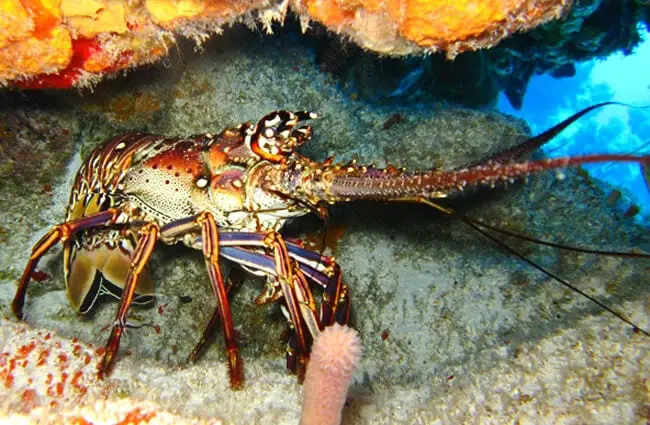
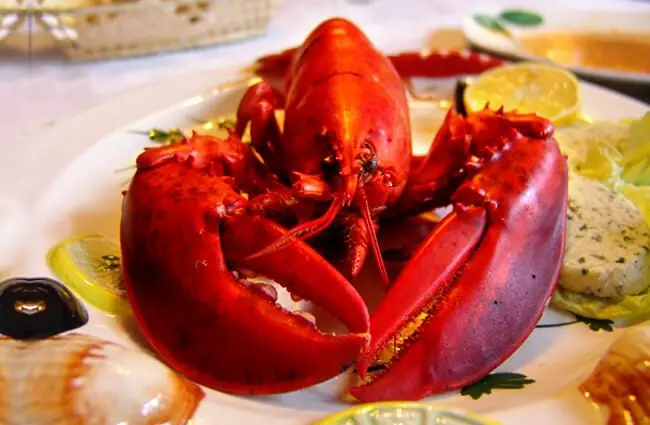




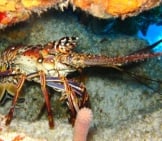


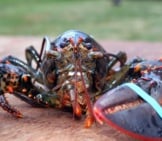

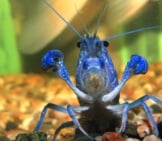

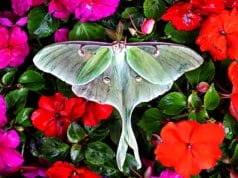
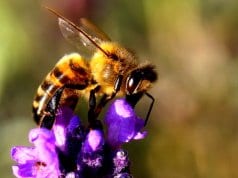










![Red Angus Closeup of a beautiful Red Angus cowPhoto by: U.S. Department of Agriculture [pubic domain]https://creativecommons.org/licenses/by/2.0/](https://animals.net/wp-content/uploads/2020/03/Red-Angus-4-100x75.jpg)

